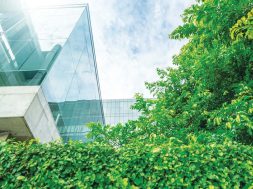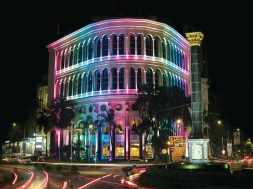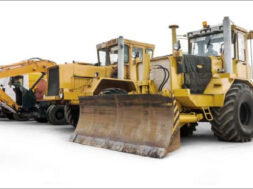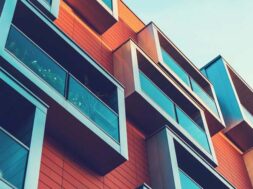‘Elevating’ the lift experience
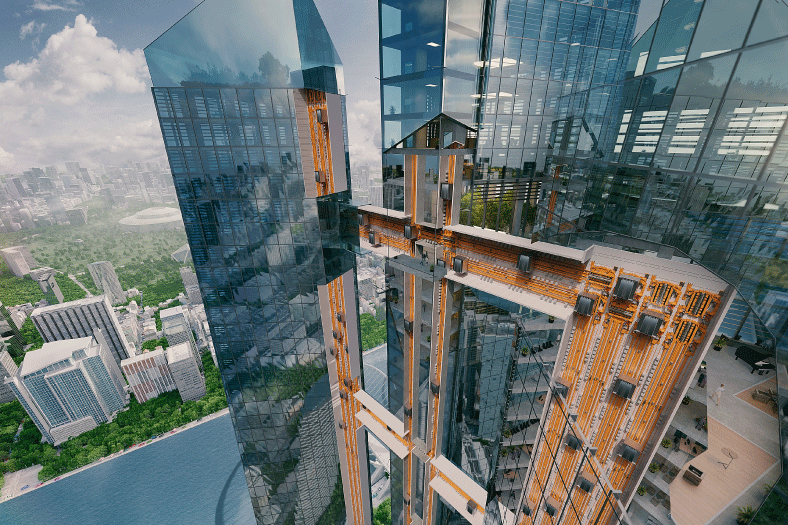
High speed and special ride comfort needs are essential for elevator systems of high-rise. Usability, reliability and maintainability play a vital role for builders to select the right specification of the elevator.
With the real estate industry facing a shortage of land, skyscrapers or high-rises are being seen as the solution to decongest metropolitan cities. Over the past couple of decades, population in urban settlements have grown multi-fold due to migration for better job opportunity. This also created demand for residential and commercial space in cities like Mumbai, Pune, Delhi NCR, Bangalore, Hyderabad, resulting dotted with high-rise projects all across. And, there are several such projects in pipeline to be completed soon.
In such a scenario, demand for quality high speed elevators is growing because elevators are the lifeline for the high-rise buildings. However, now the role of elevators is not limited to lift people from one floor to another but also value-added services such as high-speed comfortable ride with security and safety features. India has now become one of the most preferred markets in the world for the global players in the lifts and elevators sector. Today, there is tough competition among the companies adding every day new features to raise their market reach.
New era shift
One of the market leaders in elevator market, Schindler has recently introduced its digital plan and design tolls for the next-gen elevators. Schindler’s experts from top range division work closely with its customers to plan, deliver and install high-speed elevator solutions, customised as per the building needs. Its advanced Digital Plan and Design tool adds key value on this front, by helping architects and customers alike to plan for the optimum elevator configuration while designing their buildings. Vaibhav Pitale, Sr Vice President – New Installation Business, Schindler India Pvt Ltd says, “Digital Plan and Design tool helps not only in planning, but it also enables architects to create elevator layouts, elevator traffic study and tender documents in customised manner for their projects.” Moreover, the tool will help architects and designers in all kinds of facilities planning based on its type and usage, be it residential, commercial, hotels, hospitals etc. According to Bharat Vishnani, Managing Director, thyssenkrupp Elevator (India) Pvt Ltd Safety and energy efficiency have taken centre stage and there is a growing demand for high-speed, high-capacity elevators that can carry many passengers at once, safely and comfortably, particularly in high-rise office buildings, commercial complexes and other large-scale facilities.
Aesthetics & applications
Another trend that is taking place in the industry is the focus and attention on aesthetics and smart applications. Sebi Joseph, President, Otis India observes, “The modern Indian customer is now paying more attention than ever to elevators. Apart from the focus on energy savings, technology, safety and other critical features, the customer is now looking to create an interesting and engaging space within an elevator. They are looking for softer edges, etchings, patterns, unusual colours, materials and textures. In short, they are looking to add personality to their elevator space.” Smart elevators are equipped with smart access control, advanced and sophisticated security systems and superior elevator hardware and software technologies. Also, because of the nature of high-rise buildings, smart elevators will aid in better monitoring and maintenance requirements of buildings.Amit Gossain, Managing Director, KONE Elevators India Ltd says, “We live in an increasingly connected world and it makes sense for equipment, data and people to be connected. Customers, too, want to be better connected to know what’s going on with their equipment and what we’re doing about it. This is where IoT comes and it will play a significant role in bringing smart elevators to Indian market.” Other aspects manufacturers emphasising are elevators designed with unique premium designs, noble materials, fixtures with ergonomic interface and great features can infuse profound and classy elegance into the high-rise buildings. Joseph says, “As is the case with any elevators including high rise elevators, one can select from the range of ceilings, car panel finishes, floorings, car operating panel, hall lanterns etc.” Contemporary elevators are aesthetically designed to suit the interiors of the building. Various options in terms of finishes can be blended in the elevator car. Other features like lighting and elevator accessories usually enhance the ambience and comfort in the elevator car. Gossain says, “As buildings get taller, there is a need for ultra-high speed elevators and efficient people flow solutions.”
New technology in market
PORT technology: With the help of PORT technology, passengers select their destination floor before entering the elevator which allows passengers with the same destination floor to be grouped. This eliminates crowding during heavy traffic, avoids passenger competition for the first available car and reduces journey times of up to 40 per cent. Passengers can identify themselves at a PORT terminal using a badge, PIN code or other electronically readable device. Based on the passengers’ stored details, PORT automatically verifies their access rights and assigns the car that will deliver them to their floor most efficiently. This allows to separate passengers and goods transport, to make priority calls (VIP), to program space requirements (e.g. for serving carts), to activate special features for people with special-needs. Pitale from Schindler says, “Schindler’s unique Destination Interface modernisation process allows us to bring virtually any brand of equipment to the PORT technology quickly and economically.” The process can quickly and easily convert conventional controls to the PORT technology destination dispatch. Destination Interface is cost-effective, with immediate performance improvements and personalisation benefits, with minimal downtime. Destination Interface may be the only step needed when applying newer controls or it can be implemented as the first step of a more comprehensive phased modernisation of older technology.
TWIN elevator system: Vishnani from thyssenkrupp says, “thyssenkrupp understands the requirements and the challenges of modern skyscrapers. Hence, we have developed revolutionary TWIN elevator system and Double-Deck Elevator system, which are considered to be an ideal solution for tall buildings.” Fast and energy efficient, TWIN elevator system comes equipped with intelligent traffic control systems, which optimise traffic automatically and reduce empty runs. This state-of-the-art elevator system has two cabs running independently in the same shaft, each with its own counterweight, safety and drive equipment. With reduced shaft core space and construction costs, the TWIN elevator system offers the most flexible elevator solution with an eco-conscious heart.
Double-Deck elevator system: thyssenkrupp Double-Deck elevator system has been designed specifically to meet the shuttle operation needs in high-rise buildings. Designating Double-Deck elevators to conduct high speed transport for a high volume of passengers at pre-defined stops or transfer points optimises traffic flow. The Double-Deck system can also transport heavy traffic for specific floors; for instance, the lower cab can serve all even floors and the upper cab at all odd floors.
HP61 elevator: HP61 elevator is built for high-rise commercial buildings. With its high speed feature and small machine room, it is well suitable for managing high traffic flows in high-end office buildings and hotels, providing top of the range experience to suit the building. Ultimately designed for high-end commercial applications, HP61 comes with customised, premium designs following the latest interior and material trends for high-end buildings. To offer a faster ride to one’s designated floor in the least possible time with minimum internment stops, less crowding in the elevator lobby and greater flexibility in elevator core layout designs, HP61 comes with thyssenkrupp’s Destination Selection Control (DSC).
MULTI-rope-free elevator system: thyssenkrupp’s MULTI allows several cabins in the same shaft to move vertically and horizontally which makes it an ideal transport solution for mid- and high-rise buildings. MULTI requires no cables and uses a multi-level brake system and inductive power transfers between shaft and cabin. This allows the elevator to occupy smaller shafts than conventional elevators, which can increase a building’s usable area by up to 25 per cent. The overall increase in efficiency also translates into a lower requirement for escalators and additional elevator shafts, resulting in significant construction cost savings as well as a multiplication of rent revenues from increased usable space. In a manner similar to a metro system operation, MULTI elevator design can incorporate various self-propelled elevator cabins per shaft running in a loop, increasing the shaft transport capacity by up to 50 per cent, making it possible to reduce the elevator footprint in buildings by as much as 50 per cent.
SkyBuild elevator-quick and safe: The Otis SkyRise system, designed for the world’s tallest buildings, uses the SkyMotion machine, among the most energy efficient on the planet. The SkyMotion machine’s lighter weight makes it easier to install and its smaller footprint saves building space. In addition, all SkyRise elevators come standard with the Otis SkyBuild self-climbing construction elevator. With the SkyBuild elevator, crews and materials get where they need to be quickly and safely without a crane, an external lift or exposure to the weather. SkyBuild’s unique hydraulic piston system enables it to climb one floor at a time as the building rises. Each climb can be accomplished between shifts, reducing the impact on other trades and once the construction is complete, SkyBuild goes directly into service as a SkyRise elevator. Joseph from Otis says, “Well suited for busy mid and high-rise buildings, the CompassPlus destination management system from Otis is an innovation we are proud of.”
Growth prospects
Urbanisation has been the key factor in the increasing demand for high rise buildings which are growing taller, to offset the availability of land. As Indian cities continue to expand, the need for housing and commercial space grows. This spurs further growth for the country’s elevator industry which will continue to grow just as rapidly. India is the second largest market for elevators and escalators in the world according to market analysts.
Digital Plan and Design tool helps not only in planning, but it also enables architects to create elevator layouts, elevator traffic study and tender documents in a customised manner for their projects.
Vaibhav Pitale, Sr. Vice President – New Installation Business,
Schindler India Pvt Ltd
Safety and energy efficiency have taken centre stage and there is a growing demand for high-speed, high-capacity elevators that can carry many passengers at once, safely and comfortably.
Bharat Vishnani, Managing Director, thyssenkrupp Elevator (India) Pvt Ltd
Apart from the focus on energy savings, technology, safety and other critical features, the customer is now looking to create an interesting and engaging space within an elevator.
Sebi Joseph, President, Otis India
As buildings get taller, there is a need for ultra-high speed elevators and efficient people flow solutions.
Amit Gossain, Managing Director, KONE Elevators India Ltd
19
Cookie Consent
We use cookies to personalize your experience. By continuing to visit this website you agree to our Terms & Conditions, Privacy Policy and Cookie Policy.






